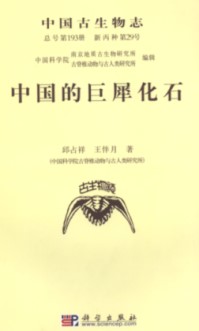|
|
Tuesday, April 8, 2025
|
|
|
|
|
Palaeontologia Sinica (New Series C,Whole Number 193,Number 29)Paracerathere Fossils of China |
|
|
 |
|
Author(s): Qiu Zhanxiang and Wang Banyue |
|
Publisher: Science Press
Published Date: 2007
ISBN: 978-7-03-019127-4
Pages: 396
Language: Chinese and English
Type: Book
Cover: Paper Cover
|
|
Our Price: $62.70
Avail: In-Stock |
|
|

Description
The paraceratheres are a group of thinoceroses autochtonous and endemic almost exclusively to Asia, with only sparse findings in Europe. Their giant size and some features so distinctive from the living thinoceroses have attracted much attention not only of specialists, but also of laymen. They constitute one of the most heatedly debated fossil groups in mammalian taxonomy. Opinions differ not only at generic and specific levels, but also at family level. Ultimately such a discrepancy has its root in the inadequacy of their fossils. In laymen’s eyes, paracerathere fossils seem rather abundant. Here we may feel the effect of the “size.” People may be more impressed by a few huge bones of paraceratheres rather than by a small box full of micromammal fossils. In fact, there are only five incomplete skulls in association with their mandibles in all known paracerathere materials. The only two paracerathere skeletons often referred to in scientific papers are in fact composite. Given the above limitations, China has indisputable superiority in this respect.
In China, in addition to large quantity of isolated jaws, teeth and postcranial bones, there complete skulls with mandibles have been found (Juxia sharamurenensis, Paraceratherium lepidum, and Dzungariotherium orgosense), of which the first is an almost complete skeleton, and the second possesses an almost complete vertebral column. Most of these materials have been briefly reported.

|
|